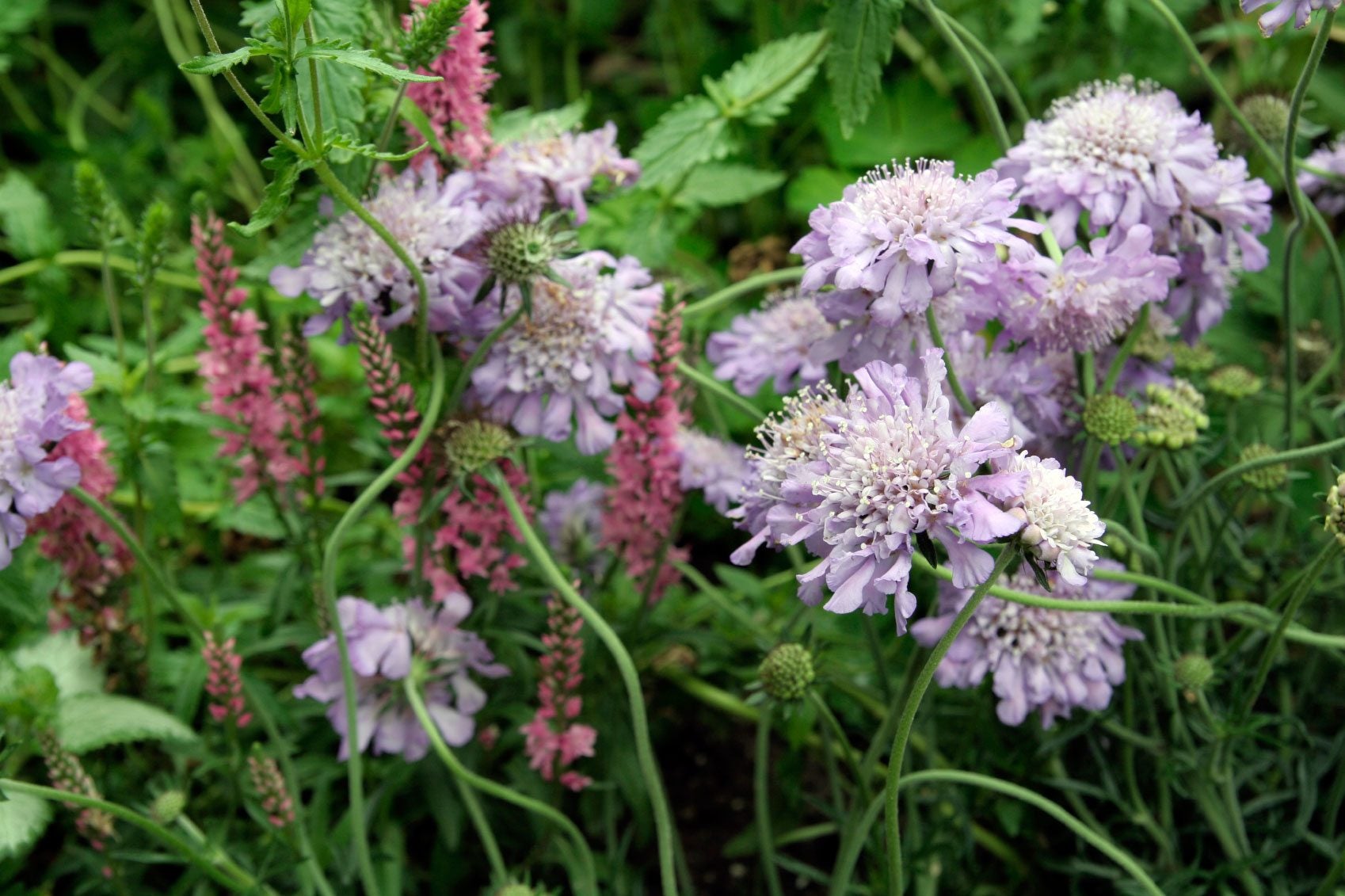Growing Conditions For Scabiosa Flowers - How To Care For Scabiosa Pincushion Flower


Looking for a new addition to the flower garden? Try scabiosa, also known as pincushion flower. This easy-care plant works well nearly anywhere, and its interesting flowers are a stunning sight to behold. They are especially attractive to butterflies. This plant is suitable for bed and border plantings or in containers. The long stems and flowering season also make it ideal for use in cutting gardens.
What are Pincushion Flowers?
The pincushion flower is part of the Scabiosa genus of flowering plants. Its common name derived from the flower's cushion-like center and pin-looking stamens, which resemble that of a pincushion. This attractive summer bloomer can be found in a variety of colors with blue, purple, and white being the most notable. Flowers may reach up to a foot or two (31-61 cm.) in height above the lush gray to blue-green foliage. In addition, there are both annual and perennial types of scabiosa: Annual pincushion (Scabiosa atropurpurea) - This type must be replanted each year, though in some areas they may reseed. Generally, the flowers of annual pincushion are somewhat smaller than their perennial counterparts and may include more color variety as well, ranging in shades of deep maroon, lavender-blue, rose, pink, and white. Perennial pincushion (Scabiosa caucasica) - Perennial scabiosa plants are most often found in shades of blue or white, though pink varieties are available as well. Flowers are also larger, up to 2 ½ to 3 inches (7-8 cm.) and will normally bloom from late spring/early summer until the first frost. Unlike the annual type, their foliage remains green year-round and will return each year.
How to Grow a Pincushion Flower
So, what are the growing conditions for scabiosa flowers? These plants are hardy to USDA plant hardiness zones 3 through 7 and most suitable to temperate conditions. They do not like to be cold, nor do they like overly wet conditions. Scabiosa plants also dislike hot, humid weather. Regardless of the type planted, these flowers perform best in full sun and require well-draining, organic-rich soil. The addition of compost, well-rotted manure or peat moss will help enrich the soil. Pincushion flowers are normally grown by seed, though container grown plants may also be available. They can be started from seed indoors during early spring or sown directly in the garden after the threat of frost has passed. The seeds germinate within two weeks and can be individually potted and transferred to the garden by May. They should be spaced at least 10 to 12 inches (25-31 cm.) apart. Perennial varieties can also be planted out in fall. Water scabiosa thoroughly after planting. Both annual and perennial types will usually flower in their first year.
How to Care for Scabiosa Plants
Their overall care is minimal, with exception to watering during unusually dry conditions, as rainfall is normally adequate in meeting their needs. Water once a week when there is no rain and twice a week during drought-like conditions. With adequate growing conditions and soil, pincushion flowers require little, if any, fertilizer. Caring for pincushion plants does involve some upkeep, however. Deadheading spent blooms is necessary to keep the plants flowering and also improves their appearance. Pruning can be performed as well, especially with perennial plantings. Cuts should be made just above a leaf joint, or the stems can be cut back to the bottom leaves in fall. Perennial types can be propagated through both seed and division. Overcrowded plants should be divided every three to four years in early spring.
Sign up for the Gardening Know How newsletter today and receive a free copy of our e-book "How to Grow Delicious Tomatoes".

Nikki Tilley has been gardening for nearly three decades. The former Senior Editor and Archivist of Gardening Know How, Nikki has also authored six gardening books.